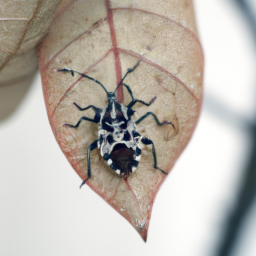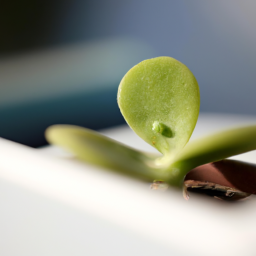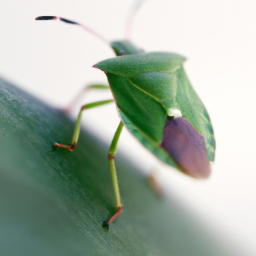
Are you a proud indoor plant parent who is constantly battling pesky insects that seem to have taken up residence in your beloved greenery? Well, you’re not alone! Indoor plants insects are a common nuisance that can wreak havoc on our carefully curated indoor gardens. Whether it’s those tiny aphids, spider mites, or fungus gnats, these uninvited guests can quickly multiply and cause significant damage to our precious plants. But fret not, because in this blog post, we will explore the world of indoor plants insects, their identification, prevention, and effective ways to get rid of them. So, grab a cup of tea, sit back, and let’s dive into the fascinating and sometimes frustrating world of indoor plants insects!
Common Indoor Plant Insects: Identifying and Treating Infestations
Indoor plants not only add beauty to our living spaces but also provide numerous health benefits. However, just like outdoor plants, indoor plants can also fall victim to various insect infestations. These pesky insects can damage the plants, hinder their growth, and even spread to other plants if left untreated. In this guide, we will explore the most common indoor plant insects, how to identify them, and effective methods for treating infestations.
Identifying Indoor Plant Insects
Before we delve into the specific insects, it’s essential to know how to identify them. By recognizing the signs of infestation early on, you can take prompt action to prevent further damage to your beloved indoor plants.
1. Visible Insects: The first and most obvious sign of an infestation is the presence of visible insects on your indoor plants. These insects can vary in size, color, and shape. Common examples include aphids, mealybugs, spider mites, and whiteflies. Carefully examine the leaves, stems, and soil surface for any signs of crawling or flying insects.
2. Leaf Damage: Insect infestations often result in visible damage to the leaves of indoor plants. Look out for chewed or discolored leaves, holes, or spots. Some insects, like spider mites, leave tiny webs on the leaves. Leaf damage can be a clear indicator of the type of insect causing the infestation.
3. Sticky Residue: Certain insects, such as aphids, secrete a sticky substance called honeydew. This residue can accumulate on the leaves and attract ants or mold growth. If you notice a shiny or sticky film on your indoor plant’s foliage, it’s likely a sign of an infestation.
4. Distorted Growth: Insects feeding on the sap of indoor plants can disrupt their growth patterns. Look for stunted or distorted growth, curling or wilting leaves, and abnormal shoot development. These signs indicate that the insects are actively feeding on your plants and hindering their overall health.
5. Presence of Eggs or Larvae: Some insects lay eggs on the undersides of leaves or in the soil. Carefully inspect your indoor plants for small clusters of eggs or tiny larvae. Identifying these early stages of insect development can help you take immediate action before the infestation worsens.
Treating Indoor Plant Insect Infestations
Once you have identified an insect infestation on your indoor plants, it’s crucial to take swift action to prevent further damage. Here are some effective methods for treating and controlling indoor plant insect infestations:
1. Manual Removal: For small infestations, manually removing the insects can be an effective initial step. Use a pair of tweezers or a gentle stream of water to carefully remove the visible insects from your plants. Be thorough and ensure you remove all the insects, including the eggs and larvae, if possible.
2. Natural Remedies: Many natural remedies can help control indoor plant insect infestations. Neem oil, for example, is a popular organic insecticide that disrupts the insect’s life cycle and acts as a repellent. You can mix a few drops of neem oil with water and spray it on your plants. Other natural remedies include insecticidal soap, garlic spray, or a mixture of water and dish soap.
3. Biological Control: Introducing beneficial insects or organisms can help control indoor plant insect infestations in a natural and eco-friendly way. Ladybugs, lacewings, and predatory mites are examples of beneficial insects that feed on common plant pests. You can purchase these beneficial insects from specialized suppliers and release them onto your infested plants.
4. Isolation: If you notice an infestation on one of your indoor plants, it’s vital to isolate the affected plant immediately. By separating the infested plant from others, you can prevent the insects from spreading and infesting your entire collection. Keep the isolated plant under close observation and treat it accordingly until the infestation is completely resolved.
5. Chemical Insecticides: In severe cases or when other methods fail, chemical insecticides can be used as a last resort. However, it’s crucial to choose insecticides specifically labeled for indoor plant use and follow the instructions carefully. Always consider the potential risks and environmental impact before resorting to chemical treatments.
Remember, prevention is better than cure when it comes to indoor plant insect infestations. Regularly inspect your plants, maintain proper hygiene, and provide optimal growing conditions to keep them healthy and less susceptible to infestations. By following these steps and promptly treating any signs of infestation, you can ensure your indoor plants thrive and remain pest-free.

Natural Ways to Control Insects on Indoor Plants
Indoor plants not only add beauty and freshness to our homes but also provide numerous health benefits. However, dealing with insects that can infest our beloved indoor plants can be quite a challenge. The good news is that there are natural ways to control these pesky insects without resorting to harmful chemicals. In this guide, we will explore some effective methods to keep your indoor plants insect-free, allowing them to thrive and flourish.
Identifying the Culprits
Before diving into the methods of controlling insects, it is crucial to identify the specific pests that are causing trouble for your indoor plants. Different insects have different preferences and habits, so understanding their characteristics will help you choose the most appropriate control methods.
One common indoor plant pest is the aphid. These small, pear-shaped insects feed on the sap of plants and can quickly multiply if not controlled. They are usually found on the undersides of leaves and can cause wilting and yellowing of the foliage.
Another notorious pest is the spider mite. These tiny arachnids are difficult to spot with the naked eye but leave behind fine webbing on the leaves. They suck the sap from plants, leading to stunted growth and yellowing leaves.
Mealybugs are yet another common indoor plant pest. These soft-bodied insects are covered in a white, waxy substance and can be found on the stems and leaves. They suck the sap from plants, causing wilting and leaf drop.
1. Introduce Beneficial Insects
One effective way to control indoor plant insects is by introducing beneficial insects that prey on them. Ladybugs, for example, are natural predators of aphids and can help keep their population in check. You can purchase ladybugs from garden centers or online suppliers and release them onto your infested plants.
Another beneficial insect is the predatory mite. These mites feed on spider mites and can help control their population. You can introduce predatory mites by purchasing them in sachets or as a liquid solution and releasing them onto the affected plants.
It is important to note that introducing beneficial insects should be done with caution. Ensure that the conditions in your indoor environment are suitable for their survival and reproduction. Additionally, avoid using chemical pesticides that can harm these helpful creatures.
2. Homemade Insecticidal Soap
A homemade insecticidal soap can be an effective and safe way to control insects on indoor plants. To make your own insecticidal soap, mix one tablespoon of liquid dish soap (preferably organic) with one quart of water. Transfer the solution to a spray bottle and generously spray the affected plants, ensuring that the soap covers both the upper and undersides of the leaves.
The soap works by suffocating the insects, causing them to dehydrate and die. It is important to perform a patch test on a small portion of the plant before spraying the entire plant, as some plants may be sensitive to the soap solution.
Remember to reapply the insecticidal soap every few days until the infestation is under control. Afterward, you can continue to use it as a preventive measure on a weekly basis.
3. Neem Oil
Neem oil is a natural insecticide derived from the seeds of the neem tree. It is effective against a wide range of indoor plant pests, including aphids, mealybugs, and spider mites. Neem oil disrupts the insects’ hormonal balance, prevents them from feeding, and inhibits their ability to reproduce.
To use neem oil, dilute it according to the instructions on the product label. Transfer the diluted solution to a spray bottle and thoroughly spray the affected plants, ensuring that all surfaces are covered. Repeat the application every one to two weeks until the infestation is eradicated.
It is important to note that neem oil should not be used on plants that are stressed, wilted, or exposed to direct sunlight. Additionally, avoid using neem oil on plants that are in the flowering stage, as it may interfere with pollination.
By following these natural methods, you can effectively control insects on your indoor plants without resorting to harmful chemicals. Remember to regularly inspect your plants for signs of infestation and take immediate action to prevent the pests from causing further damage. With proper care and attention, your indoor plants will thrive and bring joy to your living space.

Preventing Insect Infestations in Indoor Gardens
Welcome to the world of indoor gardening! Creating a lush and vibrant indoor garden is a rewarding experience, but it can also attract unwanted visitors in the form of insects. Insects can damage your plants, hinder their growth, and even spread diseases. However, with proper preventive measures, you can keep these pesky insects at bay and ensure the health and beauty of your indoor garden. In this article, we will guide you through the steps to prevent insect infestations in your indoor garden.
Understanding the Common Indoor Plant Insects
Before we delve into preventive measures, it’s important to familiarize yourself with the common indoor plant insects. By understanding their characteristics and behavior, you can better protect your plants. Here are a few common indoor plant insects:
1. Aphids: These tiny, pear-shaped insects can be found in various colors, including green, black, and brown. They feed on the sap of plants, causing leaves to curl and turn yellow.
2. Fungus Gnats: These small, dark-colored flies are often found buzzing around the soil of potted plants. They lay their eggs in moist soil, and the larvae feed on plant roots.
3. Spider Mites: These minuscule pests are difficult to spot with the naked eye. They suck the sap from plants, causing leaves to develop yellow spots and eventually wither.
Creating an Unfavorable Environment for Insects
To prevent insect infestations in your indoor garden, it’s crucial to create an environment that is unfavorable for their growth and reproduction. Here are some steps you can take:
1. Maintain Proper Hygiene: Regularly clean your indoor garden, removing fallen leaves, dead plants, and any debris that can serve as a breeding ground for insects. This will help eliminate their hiding places and reduce the risk of infestation.
2. Monitor Humidity Levels: Insects thrive in humid environments. Use a hygrometer to monitor the humidity levels in your indoor garden. Aim for a humidity range of 40-60% to discourage insect activity.
3. Ensure Proper Air Circulation: Good air circulation helps keep insects at bay. Use fans or open windows to promote airflow in your indoor garden. This will also prevent the buildup of excess moisture, which can attract insects.
Natural Remedies and Biological Control
If despite your preventive efforts, you notice signs of insect infestation in your indoor garden, don’t panic! There are natural remedies and biological controls that can help you combat these pests. Here are a few options:
1. Neem Oil: Neem oil is a natural insecticide derived from the neem tree. It disrupts the feeding and reproductive cycles of insects, effectively controlling their population. Dilute neem oil according to the instructions and spray it on the affected plants.
2. Ladybugs: Ladybugs are voracious predators of aphids and other soft-bodied insects. You can purchase ladybugs from garden centers and release them in your indoor garden. They will help keep the insect population in check.
3. Sticky Traps: Sticky traps are adhesive sheets or cards that attract and trap flying insects. Hang these traps near your plants to catch fungus gnats and other flying pests. This method is particularly effective for small infestations.
By following these preventive measures and employing natural remedies, you can maintain a healthy and thriving indoor garden, free from insect infestations. Remember to regularly inspect your plants for any signs of pests and take immediate action to prevent the infestation from spreading. Happy gardening!
Let’s wrap up what we learned
Indoor plants can bring life and beauty to any space, but they can also attract some unwanted visitors – insects. Dealing with insects in your indoor plants can be frustrating, but with a little knowledge and some simple tips, you can keep these pesky critters at bay and ensure your plants stay healthy and thriving.
One common insect that often infests indoor plants is the fungus gnat. These tiny flies are attracted to moist soil and can quickly multiply, becoming a nuisance for both you and your plants. To get rid of fungus gnats, you can start by letting the soil dry out between waterings, as these pests thrive in damp conditions. Additionally, placing sticky traps near your plants can help catch adult gnats, preventing them from laying eggs in the soil. Another common indoor plant insect is the spider mite. These tiny pests can be difficult to spot, but their presence can be detected by the presence of webbing on your plants. To combat spider mites, you can try spraying your plants with a mixture of water and dish soap, as this can help suffocate and kill these pests. Regularly wiping down your plants with a damp cloth can also help keep spider mites at bay. By taking these simple steps and staying vigilant, you can ensure that your indoor plants remain insect-free and continue to thrive.
Here are some FAQs you’d be interested in:
Q1: How can I identify insects on my indoor plants?
A1: Identifying insects on your indoor plants can be done by closely examining the leaves, stems, and soil. Look out for signs like small holes in leaves, sticky residue, webbing, or tiny crawling creatures. You can also use a magnifying glass to get a better view. If you’re unsure about a particular insect, you can take a clear photo and seek help from local garden centers or online gardening communities.
Q2: What are some common indoor plant insects and pests?
A2: There are several common insects and pests that can infest indoor plants. Some of the most frequent culprits include aphids, spider mites, mealybugs, fungus gnats, scale insects, and whiteflies. These pests can cause damage to the plant’s foliage, weaken its overall health, and even spread to other nearby plants if not dealt with promptly.
Q3: How can I get rid of insects on my indoor plants?
A3: There are various methods to eliminate insects from indoor plants. Depending on the severity of the infestation, you can start by manually removing the insects using a soft cloth or sponge. For more persistent pests, you can try using natural remedies like neem oil, insecticidal soap, or a mixture of water and dish soap. Another option is introducing beneficial insects like ladybugs or predatory mites, which feed on common plant pests.
Q4: How can I prevent insects from infesting my indoor plants?
A4: Prevention is key to avoiding insect infestations on your indoor plants. To minimize the risk, ensure you provide proper care for your plants by watering them appropriately, providing adequate sunlight, and maintaining good air circulation. Regularly inspect your plants for any signs of pests or diseases, and promptly isolate any infected plants to prevent the spread. Additionally, avoid over-fertilizing your plants, as this can attract pests.
Q5: Are there any natural ways to control indoor plant insects?
A5: Yes, there are several natural methods to control indoor plant insects. Some effective options include introducing natural predators like ladybugs or lacewings, using insecticidal soaps made from plant-based ingredients, or creating homemade sprays using ingredients like garlic, chili pepper, or vinegar. These natural approaches are often safer for the environment and can be an excellent alternative to chemical pesticides, especially if you have children, pets, or are concerned about chemical exposure.

James Wong is a renowned ethnobotanist, plant scientist, and local television presenter. With a passion for demystifying plant science, he is known for translating complex botanical concepts into practical advice for everyday plant enthusiasts. James’s expertise spans from traditional gardening to cutting-edge plant technologies, making his insights accessible and informative.


